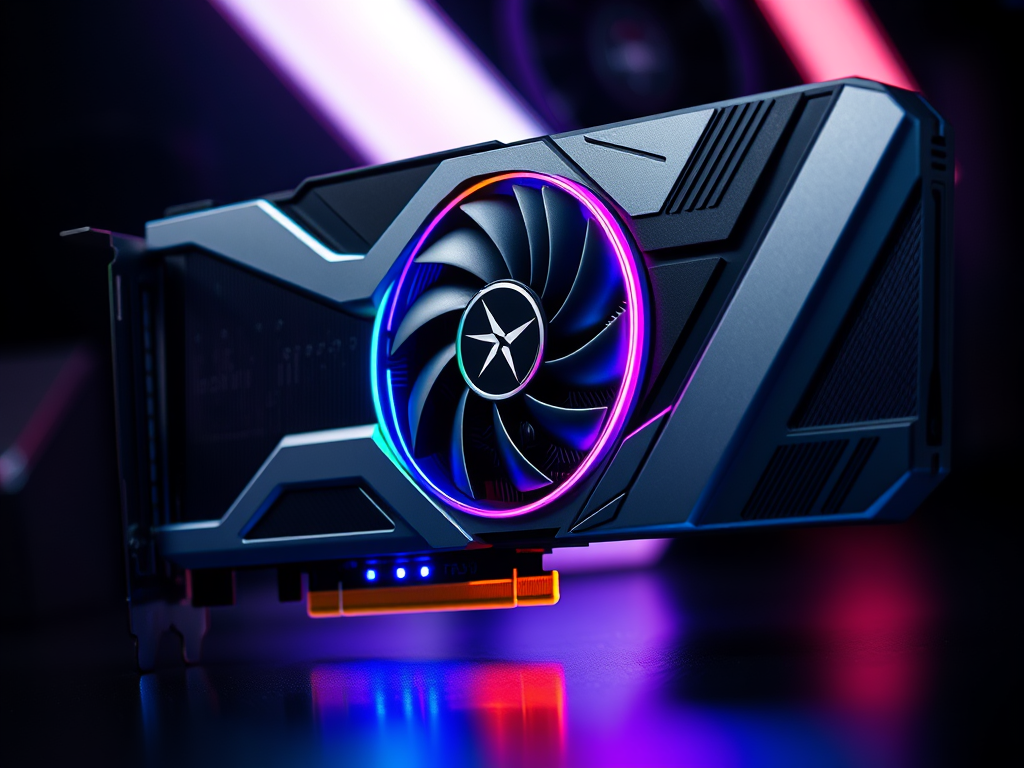In the ever-evolving world of gaming, where technology advances at lightning speed, selecting the right graphics card (GPU) has become more important than ever. By 2025, the gaming landscape will likely be shaped by even more cutting-edge graphics, increasingly demanding game engines, and a possible shift toward virtual reality (VR) and AI-powered experiences. In this blog, we’ll dive into the top graphics cards for gaming in 2025, offer guidance on what gamers should prioritize when choosing one, and highlight which GPUs are best suited for various gaming preferences.
Table of Contents

Why the Right Graphics Card Matters
The GPU is the heart and soul of your gaming rig. It’s responsible for rendering the detailed graphics, smooth gameplay, and immersive visual effects that modern games are known for. Whether you’re playing high-end AAA titles, exploring open-world environments, or diving into VR experiences, your GPU dictates how smoothly and beautifully those moments come to life.
In 2025, gaming graphics will continue to push boundaries, incorporating ray tracing, 4K (or even 8K) resolutions, AI-enhanced visuals, and fast refresh rates. Therefore, choosing a GPU with the right balance of power, performance, and future-proofing is essential.
Key Factors to Consider When Choosing a GPU in 2025
1. Ray Tracing and AI Features
Ray tracing has revolutionized gaming visuals by simulating realistic lighting, shadows, and reflections. While it’s still demanding, in 2025, ray tracing is expected to be more accessible. Look for GPUs that handle real-time ray tracing efficiently, offering high FPS (frames per second) with this advanced feature enabled.
Moreover, AI-driven enhancements like DLSS (Deep Learning Super Sampling) from Nvidia and similar technologies will be commonplace. These technologies use AI to upscale lower resolution frames, making games run smoother while still delivering crisp visuals.
2. 4K and Beyond: Resolution Support
By 2025, 4K gaming will be the standard, and some gamers may even be aiming for 8K resolution. If you’re building or upgrading your rig for high-resolution gaming, you’ll need a GPU that can support these high pixel counts without sacrificing performance. Keep an eye out for GPUs with higher VRAM (Video Random Access Memory), as games at 4K or 8K resolutions require substantial memory bandwidth to load textures and assets smoothly.
3. Frame Rate and Refresh Rate
If you’re playing competitive titles or want ultra-smooth gameplay, you need a graphics card that can handle high frame rates (144Hz, 240Hz, or even 360Hz for esports). In combination with high-end monitors, a powerful GPU can ensure a seamless and lag-free experience, even at ultra-high resolutions.
4. VR Gaming Capabilities
Virtual Reality (VR) is gaining traction, and by 2025, VR gaming will become a more mainstream experience. A strong GPU is necessary to power the immersive world of VR. Look for GPUs that are VR-ready, capable of handling the low latency and high frame rates required for a smooth VR experience.
5. Power Consumption and Cooling
With all the raw power packed into modern GPUs, heat management is critical. GPUs in 2025 will likely be more power-hungry, so you’ll need a robust cooling solution, whether that means better airflow in your PC case or an advanced liquid cooling system.
Also, keep an eye on power efficiency—you don’t want to run into issues like throttling or higher electricity bills. Choosing a graphics card that offers a balance between performance and power consumption is key.
Top Graphics Cards to Consider for Gaming in 2025
Now that we’ve covered the most important considerations, let’s look at some of the best graphics cards to suit different gaming needs in 2025.
1. Nvidia GeForce RTX 5090 Ti
Best for: Hardcore 4K & 8K Gaming, Ray Tracing, VR
- CUDA Cores: ~18,000
- VRAM: 24 GB GDDR7
- Ray Tracing Cores: 4th Gen
- DLSS 3.0: Supported
- Power Consumption: 400W
- Price: Expected to be high-end, upwards of $2,000
Nvidia’s flagship GPU is likely to dominate the market for the next few years. With an insane number of CUDA cores and a massive amount of VRAM, the RTX 5090 Ti will crush 4K and 8K gaming at ultra settings. This GPU also supports advanced ray tracing and is optimized for VR, delivering smooth and immersive experiences. Expect the price to be steep, but this is the ultimate option for enthusiasts and professionals.
2. AMD Radeon RX 8900 XT
Best for: 4K Gaming, Budget to Mid-Range Builds
- Compute Units: 120
- VRAM: 16 GB GDDR7
- Ray Tracing: Yes, with improvements
- FidelityFX Super Resolution (FSR): Supported
- Power Consumption: 350W
- Price: ~$1,200
AMD’s flagship card has been increasingly competitive with Nvidia, and the RX 8900 XT promises to give gamers excellent performance without the eye-watering price of the RTX 5090 Ti. With a strong focus on ray tracing and AI-based upscaling (FSR), it can easily handle 4K gaming and some VR titles. Plus, AMD tends to offer better value for money compared to Nvidia’s high-end cards.
3. Nvidia GeForce RTX 5070 Super
Best for: Mid-Range Gaming, 1440p and 4K
- CUDA Cores: ~12,000
- VRAM: 16 GB GDDR7
- Ray Tracing: 3rd Gen
- DLSS 3.0: Supported
- Power Consumption: 280W
- Price: ~$800
For those who want solid performance without breaking the bank, the RTX 5070 Super is a sweet spot. It’s great for high-quality gaming at 1440p and can even handle 4K gaming with settings turned down a bit. With the new advancements in Nvidia’s architecture, it’s perfect for future-proofing your system at a more affordable price.
4. AMD Radeon RX 7800 XT
Best for: 1080p to 1440p Gaming, Budget Builds
- Compute Units: 96
- VRAM: 12 GB GDDR7
- Ray Tracing: Yes, but lower performance than Nvidia’s top-end
- FSR 3.0: Supported
- Power Consumption: 250W
- Price: ~$500
If you’re on a budget but still want a great gaming experience, the RX 7800 XT offers fantastic value. It excels at 1080p and 1440p gaming, with decent ray tracing support. The card is well-suited for gamers who don’t need to push the limits of 4K but want solid performance at a lower price point.
5. Nvidia GeForce RTX 4060 Ti
Best for: Casual Gaming, Budget-Friendly Option
- CUDA Cores: ~5,000
- VRAM: 8 GB GDDR6
- Ray Tracing: Supported but limited performance
- DLSS 2.0: Supported
- Power Consumption: 200W
- Price: ~$350
For gamers looking to stick to 1080p gaming without spending much, the RTX 4060 Ti is a solid entry-level option. While it can handle ray tracing at lower settings, its strength lies in delivering smooth 1080p gaming with support for DLSS, which makes games look better and run faster.
Conclusion: Which GPU Is Right for You in 2025?
Choosing the perfect graphics card for gaming in 2025 boils down to your needs and budget. If you want the best of the best, the Nvidia GeForce RTX 5090 Ti is the ultimate powerhouse for 4K, 8K, and VR gaming. However, if you’re on a budget or gaming at 1080p or 1440p, the AMD Radeon RX 7800 XT or the Nvidia RTX 4060 Ti will offer excellent value while still delivering a fantastic experience.
The key is to strike a balance between performance, future-proofing, and what your system can handle. Whichever GPU you choose, make sure to complement it with a strong processor and sufficient RAM to avoid bottlenecks, and get ready to dive into the next-gen gaming experiences that 2025 will bring.






Leave a Reply